Sarreguemines
“Yette” Blue & White Plates - Set of 5 - Sarreguemines - 1930s–40s
“Yette” Blue & White Plates - Set of 5 - Sarreguemines - 1930s–40s
Couldn't load pickup availability
Bring a touch of relaxed French country style to the table with this five-piece Sarreguemines “Yette” ensemble!
It pairs two deep soup plates with three breakfast plates, all decorated in saturated cobalt on warm white glaze. The pattern’s hand-painted leaves and blossoms are laid in broad, expressive strokes with a zig-zag border that frames food beautifully.
These plates were used and loved — there’s utensil wear, glaze crazing, and tonal variations that give them soul. Two plates show small rim chips (see close-ups); the set remains sturdy, charming and ready for another century of service or display.
- Material: Glazed earthenware (faïence)
- Maker: Sarreguemines, France
- Pattern: “Yette” — hand-painted cobalt florals with zig-zag rim
- Style: French Country / Blue & White
- Place of Origin: Lorraine, France
- Mark: Printed Sarreguemines France Yette backstamp (various iterations)
- Date of Manufacture: 1930s–1940s
- Condition: Vintage, well-loved. Overall utensil wear, glaze crazing and discoloration consistent with age; two plates with rim chips (both shown in photos). Structurally sound and perfectly usable.
Dimensions:
-
Soup plates (2): ~23 cm | 9.1 in diameter, ~3.5 cm | 1.4 in high
-
Breakfast plates (3): ~21 cm | 8.3 in diameter
Set composition: 5 pieces total — 2 soup plates + 3 breakfast plates
Share
- Worldwide Shipping
- Secure Packaging
- Loving Curation
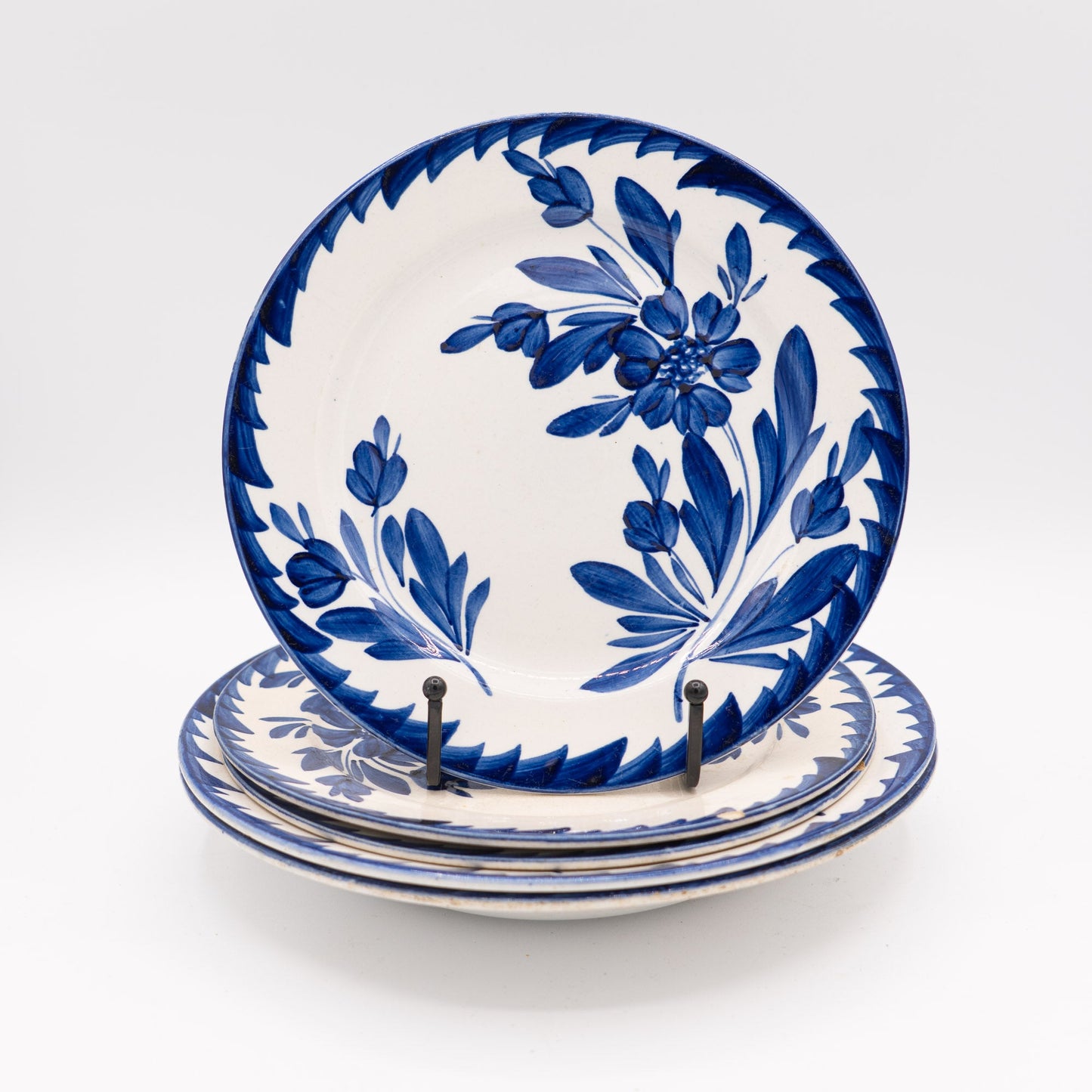
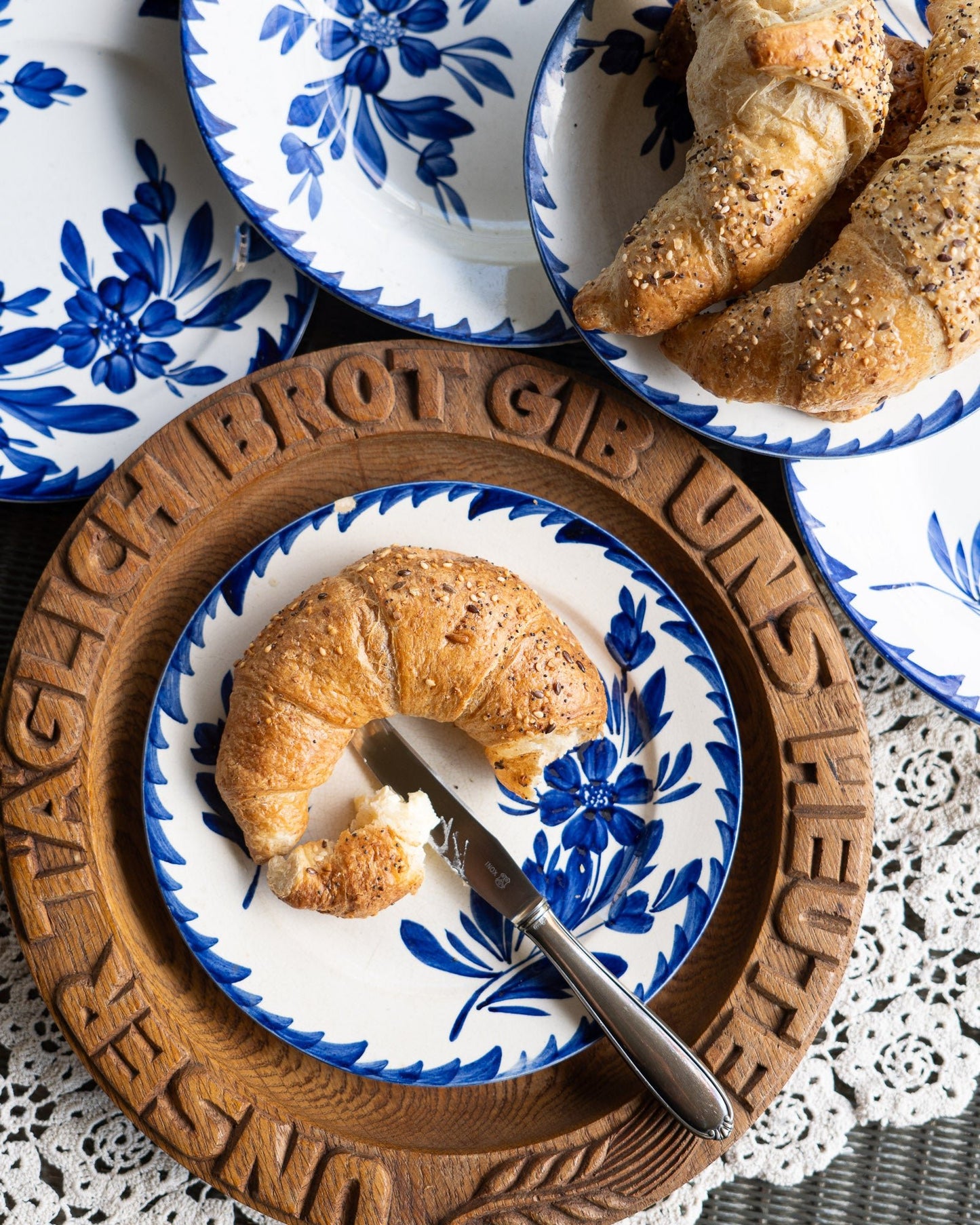
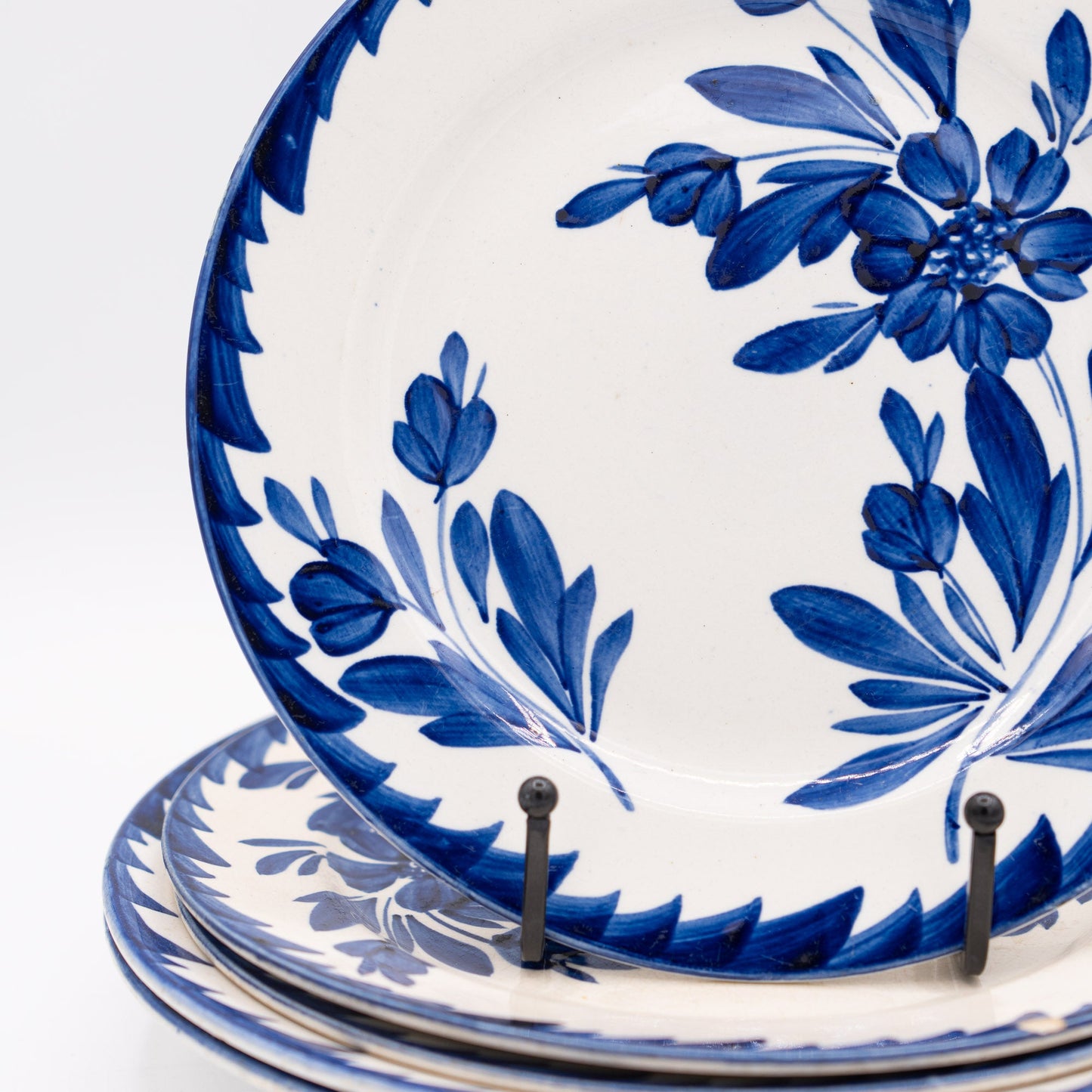
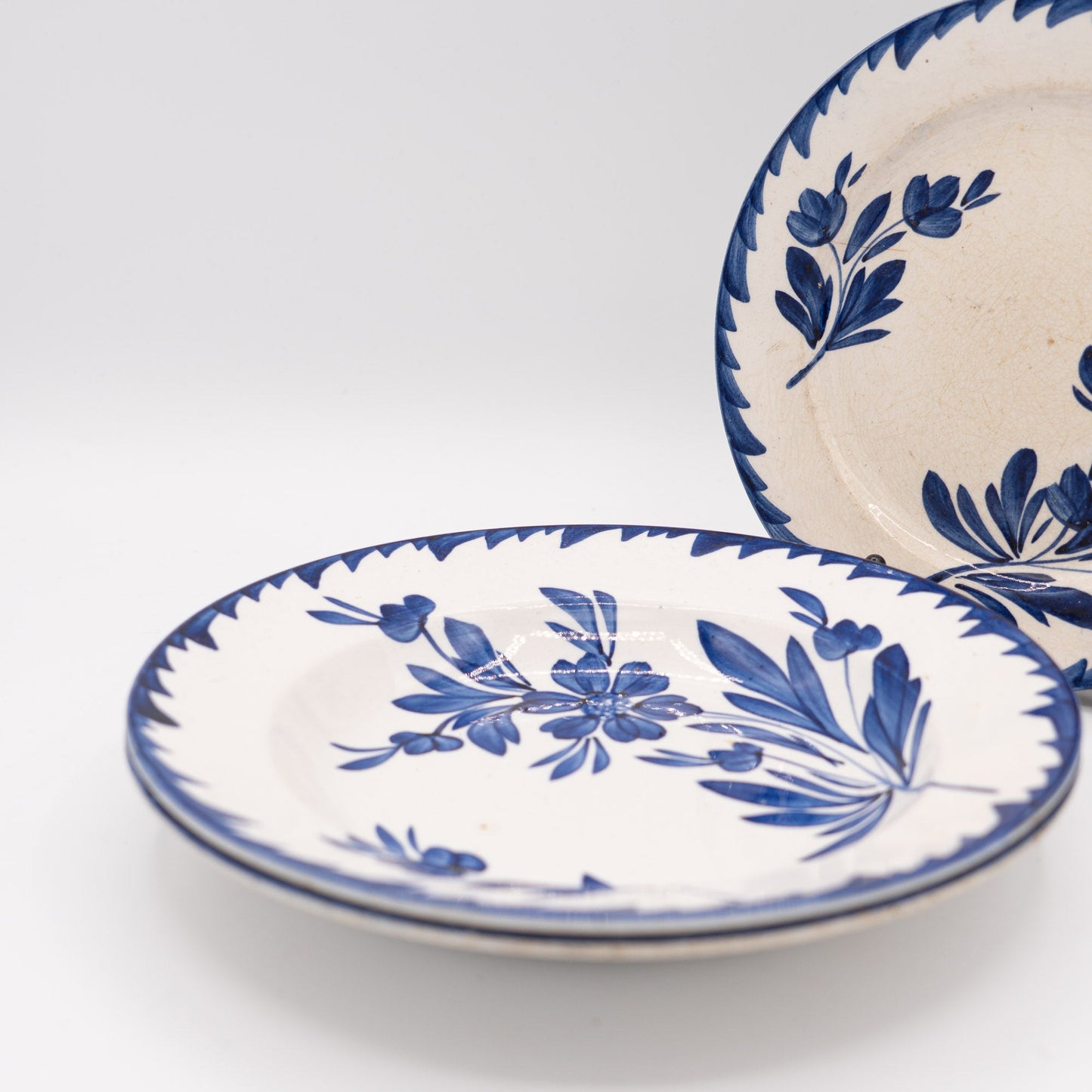
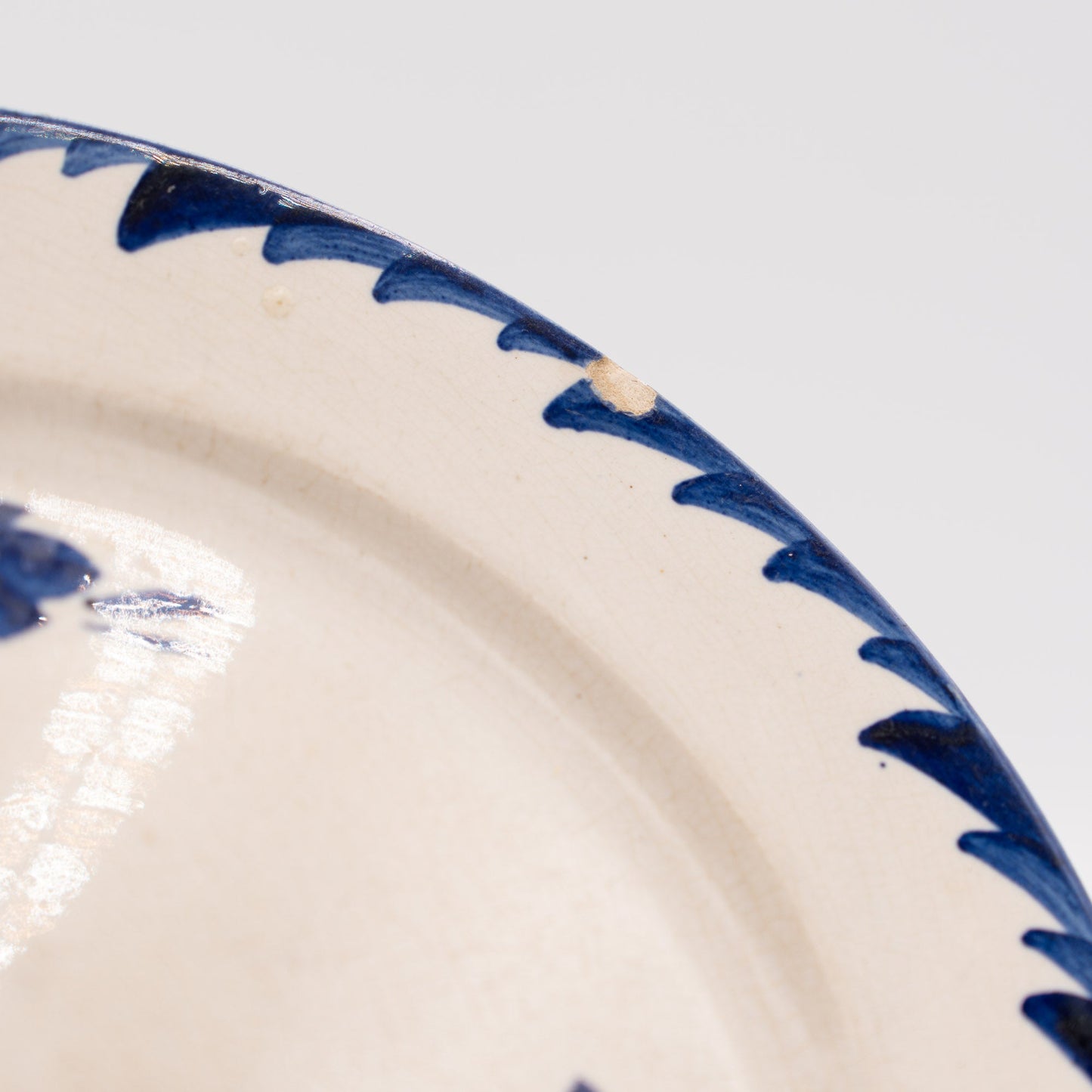
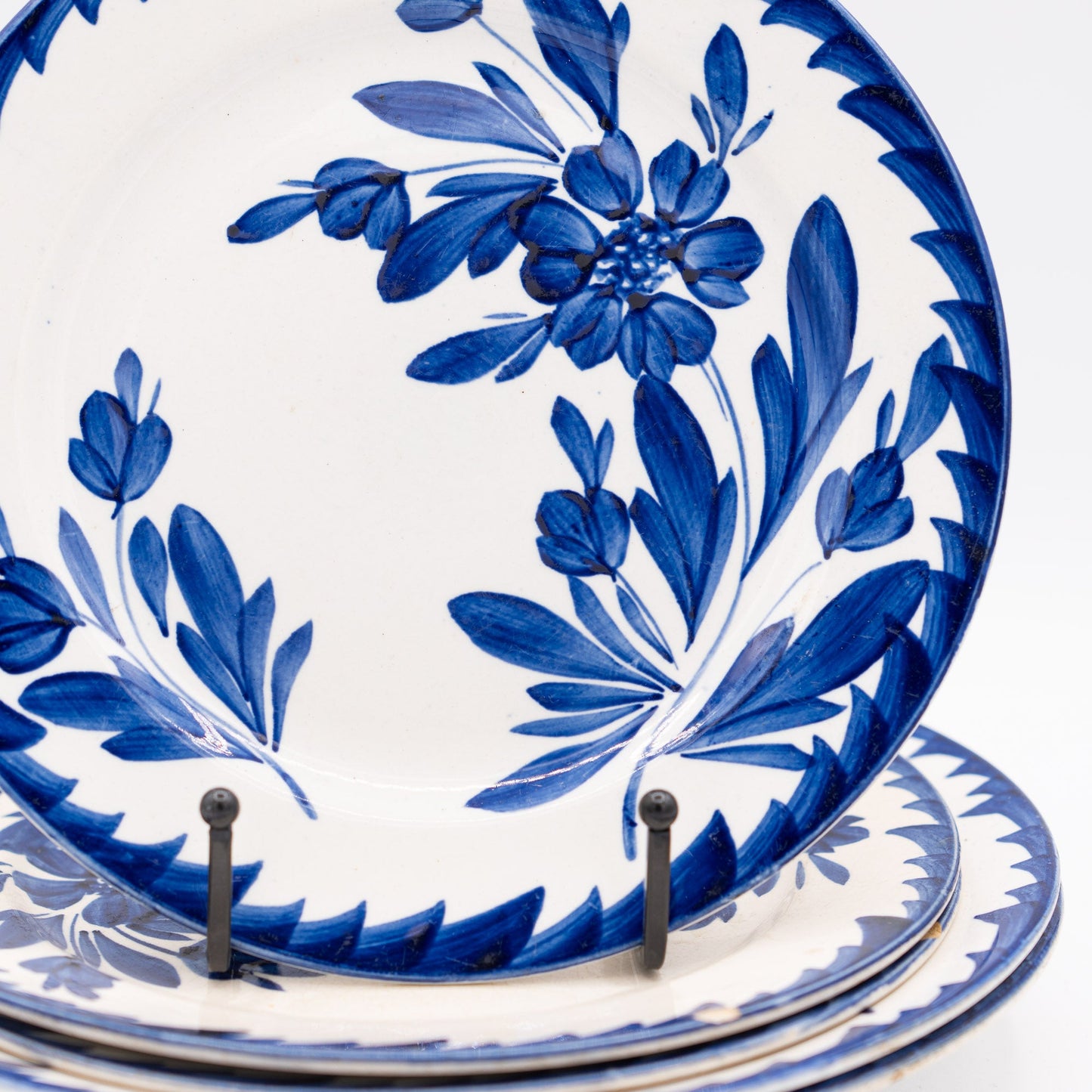
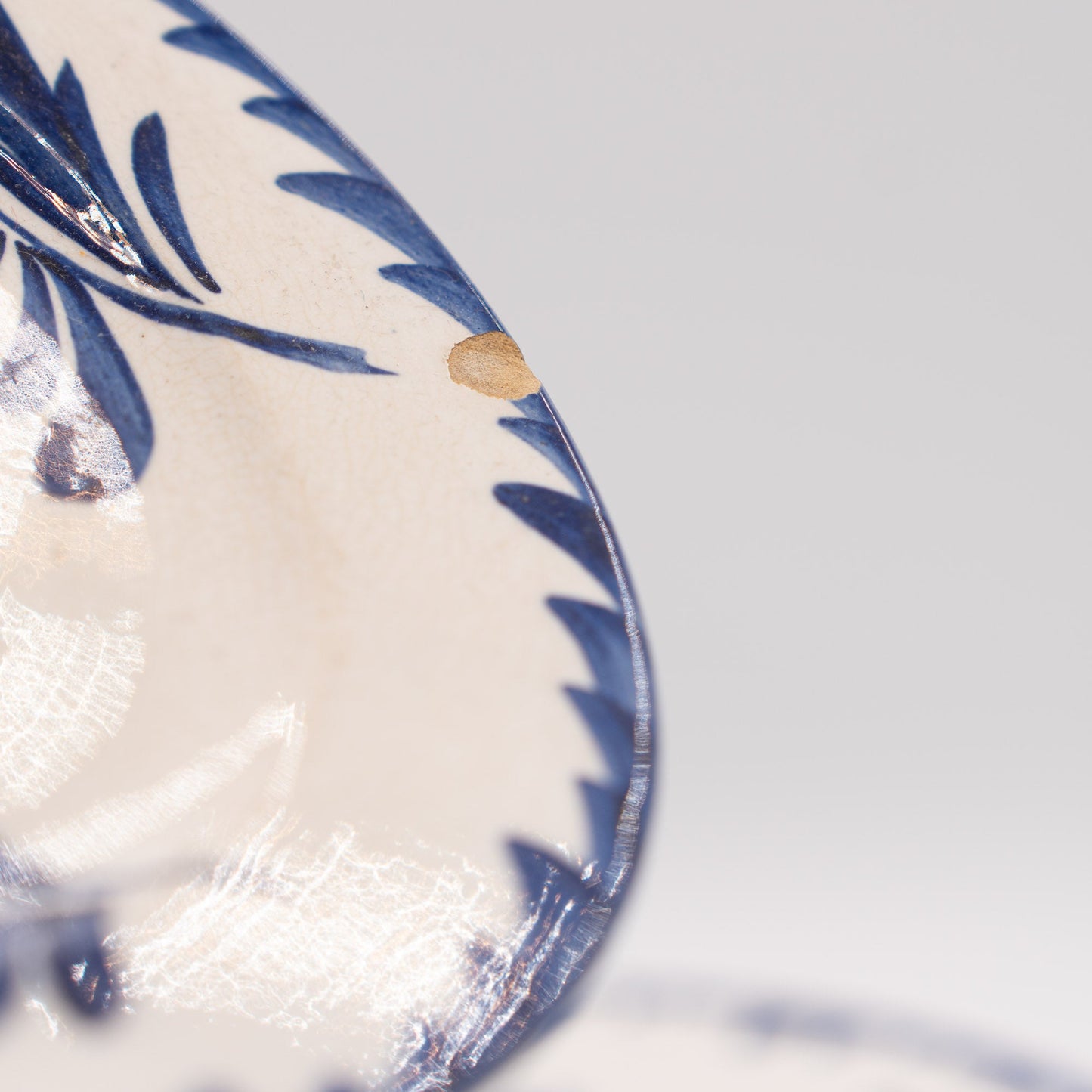
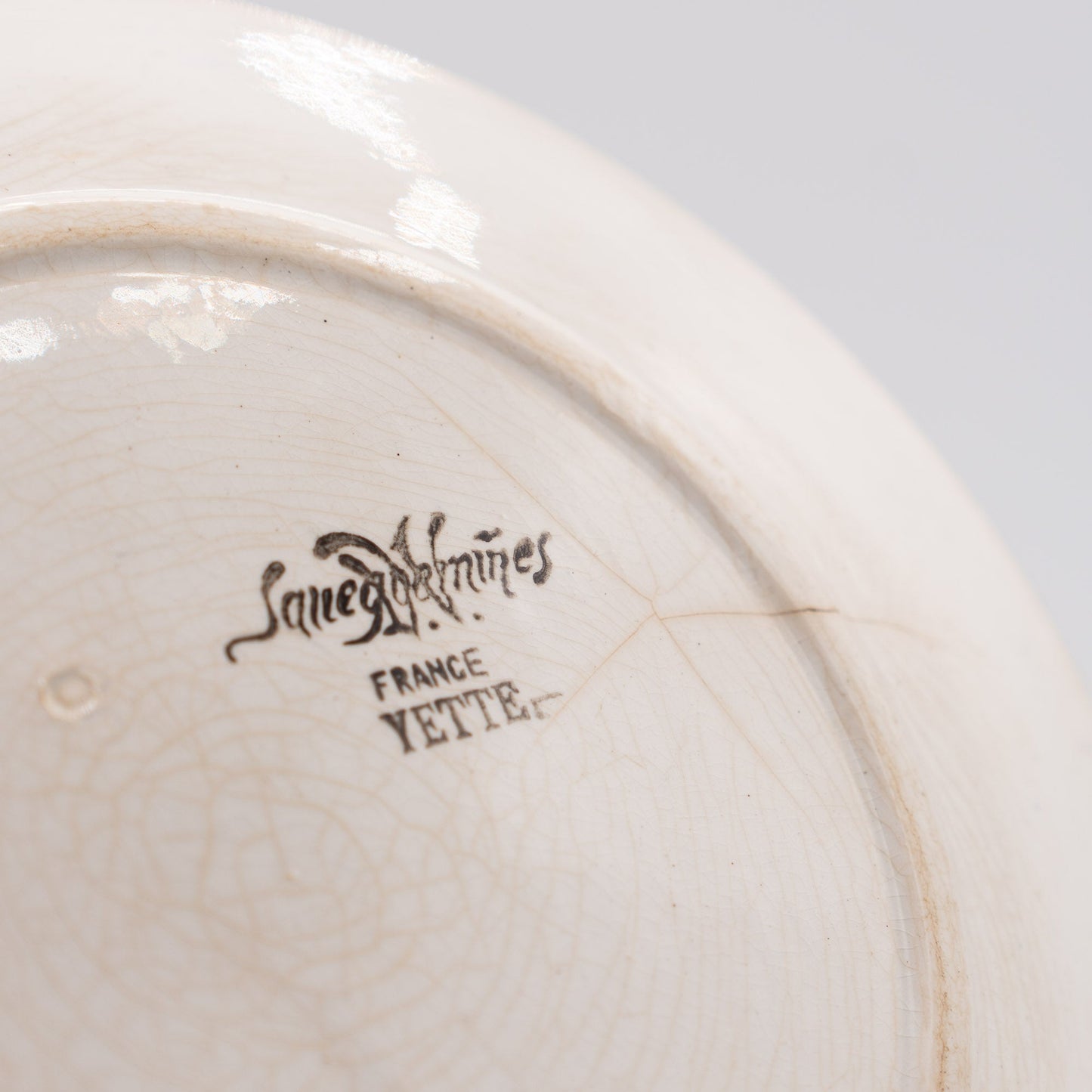
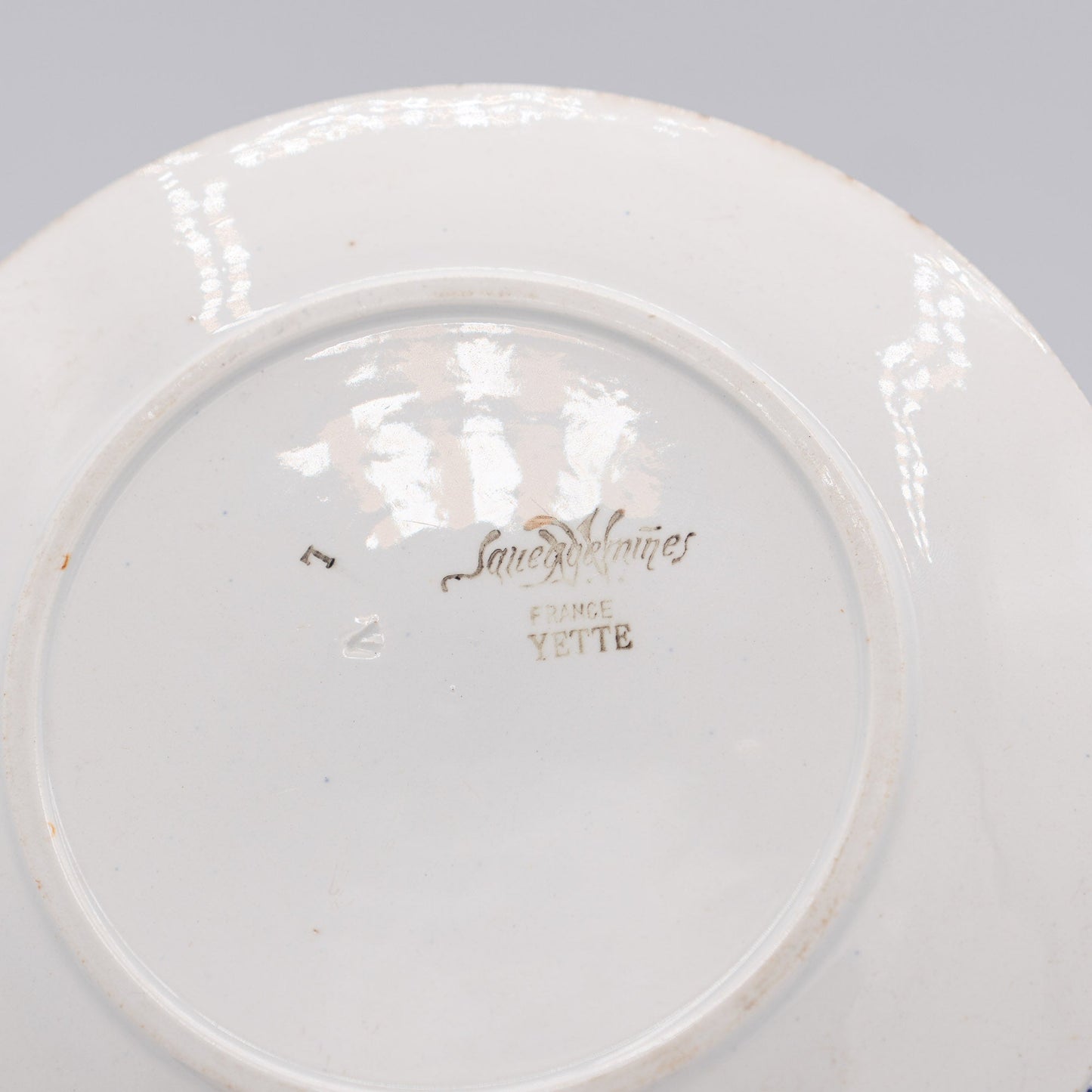
Origin & Maker
Sarreguemines is a renowned French faience company that has been producing beautiful ceramics since the late 18th century. Founded in 1790 in the town of Sarreguemines, near the French-German border, the company quickly gained a reputation for creating high-quality earthenware and faience pieces. By the 19th century, Sarreguemines had become one of France’s leading ceramics manufacturers, producing finely decorated tableware, tiles, and decorative items.
Sarreguemines gained international recognition when they showcased their work at the Exposition Universelle in Paris in 1867, a world fair that celebrated industrial and artistic achievements. This exposure helped solidify the company's reputation for innovation and craftsmanship, with their decorative faience pieces becoming highly sought after across Europe.
The company is best known for its intricate Majolica designs, vibrant glazes, and detailed hand-painting. Sarreguemines continued to flourish through the 19th and early 20th centuries, producing everything from rustic faience to elegant Art Nouveau ceramics. Today, pieces from Sarreguemines are cherished by collectors for their rich history and exquisite craftsmanship, embodying the artistry of French faience.
Blog posts
View all-

A Serendipitous Morning at the Rue de Bretagne ...
There are few joys in life that match the thrill of stumbling upon a hidden treasure, and for me, flea markets hold that magical allure. One of my favourite flea...
A Serendipitous Morning at the Rue de Bretagne ...
There are few joys in life that match the thrill of stumbling upon a hidden treasure, and for me, flea markets hold that magical allure. One of my favourite flea...
-

Emile Bourgeois and "Le Grand Dépôt" in Paris
Recently, I found this stunning Sarreguemines wash set. It was at the Brocante in Belfort, France. On this day, we had got up at 4 AM to be there in...
Emile Bourgeois and "Le Grand Dépôt" in Paris
Recently, I found this stunning Sarreguemines wash set. It was at the Brocante in Belfort, France. On this day, we had got up at 4 AM to be there in...
-

The Legacy of Robert Haviland: A Journey from N...
The story of Robert Haviland porcelain is one of artistry, transatlantic ambition, and enduring heritage. It begins in the mid-19th century when David Haviland, an enterprising New Yorker, founded Haviland...
The Legacy of Robert Haviland: A Journey from N...
The story of Robert Haviland porcelain is one of artistry, transatlantic ambition, and enduring heritage. It begins in the mid-19th century when David Haviland, an enterprising New Yorker, founded Haviland...












